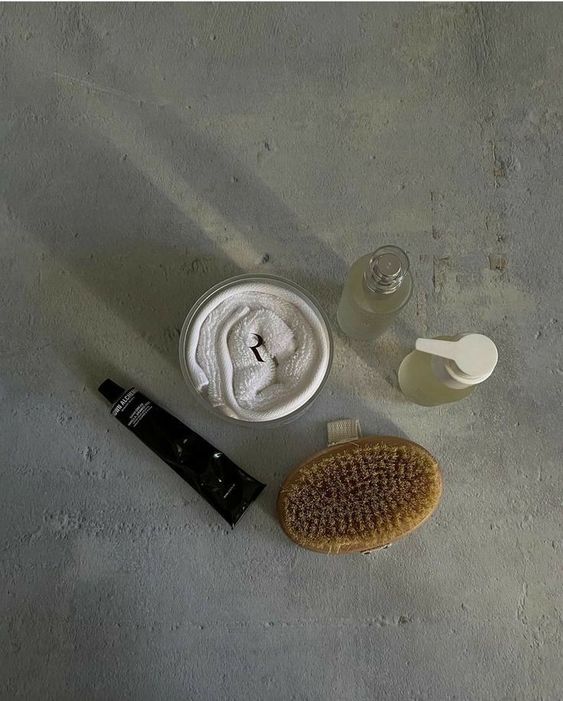
It is believed that massage is as ancient as man's history on Earth and it was born literally out of intuition. When we hurt ourselves our reflexes prompt us to rub, press, touch or knead the injured area. These actions "miraculously" provide immediate relief. This explains the omnipresent nature of massage in practically every single civilization across the world. Each took the very basic strokes and perfected them in order to turn them into one of the most effective therapeutic techniques. Let's have a look at the birth and evolution of this ancient healing form.
Historical Significance and Timeline of Massages
[1][2][3]- The art of massage — with a proper structure that includes a specific rhythm, intensity, pressure, and sequence—dates back to the year 3,000 BC.
-
Chinese Empire
: The Cong-Fou (The Art of Man) was written by Lao-Tse disciples around 2700 BC. According to historians, this is the first book that provided therapeutic indications and recommendations of massage. Towards 2697-2596, Houng-Ti (“The Yellow Emperor”) wrote The Nei-King, also known as the Book of the Inner Man. This classic treatise of Traditional Chinese Medicine is basically an FAQ between the emperor and his physician Ch'i-Po and is split into 2 parts: Sou-Wen and Ling-Chou. The latter deals with the Chinese massage techniques that laid the groundwork for Tui Na, a vigorous massage that focuses on joints, and An Mo, a soft and subtle massage. -
India
: This amazing country is the birthplace of Ayurveda "the science or life (1800-1500 BC.). Ayurveda puts forward different massage techniques aimed at promoting hygiene, preventing disease, and preserving both the mental and physical health of all doshas (three energies or body types: vata, pitta and kapha) . These techniques can be found in The Vedas, which is largest and most ancient collection of Hindu sacred texts. In the past, ayurvedic massages were a crucial part of the religious ceremonies. -
Ancient Egypt
: Drawings depicting various surgical procedures and descriptions of therapeutic techniques, including massage strokes, were found around 1700-1550 B.C. in some Egyptian tombs belonging to Pharaonic physicians as well as in the "Ebers, Edwin Smith and Kahun Papyruses". -
Japan
: Japanese Buddhist monks travelled to China to study the Tui Na technique back in 1000 BC. Upon their return to Japan, they decided to add their own strokes to Tui Na and that is how the Anma massage came to be. In the 1940s, Tokujiro Namikoshi combined the Anma strokes with other massage techniques and created the super popular Shiatsu massage. -
Ancient Greece
: If something characterized ancient Greeks, it was their strong self-care habits that included cleanliness, a healthy diet, and vigorous physical activity, among many others. In the 7th century BC, they incorporated Eastern massage techniques into their culture. It comes as no surprise to learn that massage was one of the key aspects that made Greek athletes highly competitive. Hippocrates, "The Father of Modern Medicine," often prescribed a form of massage that involved friction to treat physical injuries. -
Ancient Rome
: Romans followed in the footsteps of Greeks and made massage an important part of their culture. Although massage was mainly a luxury for Romans, Galen, the well-known physician who studied Hippocrates protocols, employed massage as a means to cure a wide variety of ailments as well as restoring body-mind-spirit wellbeing. -
Avicenna (Ibn Sina)
: This Uzbek-born physician studied Hippocrates' and Galen's teachings on massage and general healing methods. In his works, he described into great detail how to perform different massage techniques. He thought that massage was highly beneficial in restoring health because it helps to remove toxins from muscles and other tissues. -
Modern Era
: We owe modern massage to Pehr Henrik Ling, the physical therapy pioneer who created the Swedish Movement System, or Swedish Gymnastics, in the XIX century. Ling´s techniques were later on perfected by Dutch doctor Johan George Mezger. He actually combined them with French massage techniques to create the Swedish massage which is based on 5 strokes: effleurage, petrissage, friction, tapotement and vibration.
Massage: The Concise Definition and Reciprocal Benefits
[1]The word massage was first used by French physician Guillaume Le Gentil in the 8th century. It is then believed that it comes from the French term masser, which means to rub or knead. Massage can be defined as the series of rhythmic movements performed manually by a therapist on the patient´s surface (skin, muscles, etc.) with the aim of producing an analgesic, soothing, relaxing, sedative or even stimulating effect. Massage exerts a chemical, mechanical, neurological, and psychological action on the body. We have summarized for you the myriad of benefits that massage provides:
- Stimulates blood circulation and lymphatic drainage
- Increases muscle tonicity and relieves tension
- Helps to alleviate pain and provide immediate relief
- Releases fatty substances and toxins from tissues
- Improves the general appearance of the skin
- Promotes a firm, elastic, and supple complexion/body
- Energizes the body, thus reducing fatigue
- Increases body temperature, hence enhancing the absorption of substances
- Facilitates a greater exchange of oxygen and nutrients, which supports cell regeneration
- Numbs the nerve endings that are responsible for generating pain
- Induces a sense of relaxation and wellbeing
- Calms the entire nervous system, so it produces a deep state of relaxation and wellbeing
Precautions and Contraindications To Keep In Mind
[1]Despite its multiple benefits, there are certain aspects that need to be taken into consideration before performing/having a massage:
- Avoid inflamed areas
- Apply light pressure on the trachea
- Be gentle to the eyes, nose, and mouth
Some people suffer from conditions that prevent them from enjoying a massage or will need the approval of their physician before proceeding with it.
Absolute Contraindications To Be Followed Strictly
- Fever
- Burns
- Aneurysm
- Hemorrhage
- Acute injuries
- Tumors
- Neuritis
- Meningitis
- Contagious diseases
- Skin infections
- Phlebitis
- Thrombosis
- Recent surgeries
- Uncontrolled hypertension
- Alcohol and drugs intoxication
- Liver and kidney disease
- Preeclampsia and eclampsia (pregnancy)
Relative Contraindications To Be Attentive Of
- AIDS
- Asthma
- Edema
- Bruises
- Epilepsy
- Cancer
- Diabetes
- Hernias
- Chronic fatigue
- Paralysis
- Pregnancy
- Psychosis
- Severe pain
- Heart failure
- Pinched nerve
- Varicose veins
- Impaired sensation
- Acute inflammatory conditions
- Skin conditions (acne, eczema, warts, herpes, psoriasis, etc.)
- Prescription medications: anti-coagulants, cortisone, anti-psychotics, etc.
- Local lesions: massage can be performed as long as you skip the damaged zone (bruise, cut, cyst, mole, wound, etc.).
Massage Tips: Remember Them For Your Appointment
- Check the credentials of your massage therapist. We only recommend licensed and highly skilled/experienced masseur.
- Book your massage at a time where you won't be interrupted or feel anxious. You should be able to enjoy it.
- Share your needs with the therapist so that they can recommend the most suitable technique for you.
- Be honest when filling out your questionnaire prior to your massage.
- Let your therapist know if there are any parts of your body that shouldn't be touched at all, or that should be massaged more vigorously.
- Eat at least 2 hours before your massage.
- Make sure the therapist keeps the room lightly lit, warm and noise-free.
- Maintain a correct posture during your massage.
- If you have a hard time relaxing, focus on your breathing and let yourself go.
- Massage frequency depends on your bio individuality but try at least to book a massage once per month.
- If your budget is tight, call local massage schools and ask them if their students require “case studies” to practice their massage on. This is an excellent way of enjoying a massage completely free of charge, or just paying a fraction of the real cost.
Even though many people still consider massages a luxury, the reality is that hectic modern lifestyles place a huge tax on our bodies. Eating well and doing exercise might not be enough to handle the skyrocketing levels of stress we are exposed to on a day-to-day basis. A massage is a time-honored healing technique that quickly brings down levels of pro-inflammatory factors and takes us to a happy and calming place. Restoring balance has never been so pleasant and "addictive". It's perhaps the only "addiction" that is conducive to good health. To keep up with our updates, make sure to follow us on Instagram, Facebook, Pinterest, and Linkedin.
References:
[1] Vázquez Gallego, J. (2009). Manual Profesional de Masaje. Barcelona, Spain: Paidotribo Press.
[2] https://www.cimformacion.com/blog/salud-y-bienestar/historia-del-masaje-y-origenes/
[3] https://www.amcollege.edu/blog/history-of-massage-therapy-amc-miami




